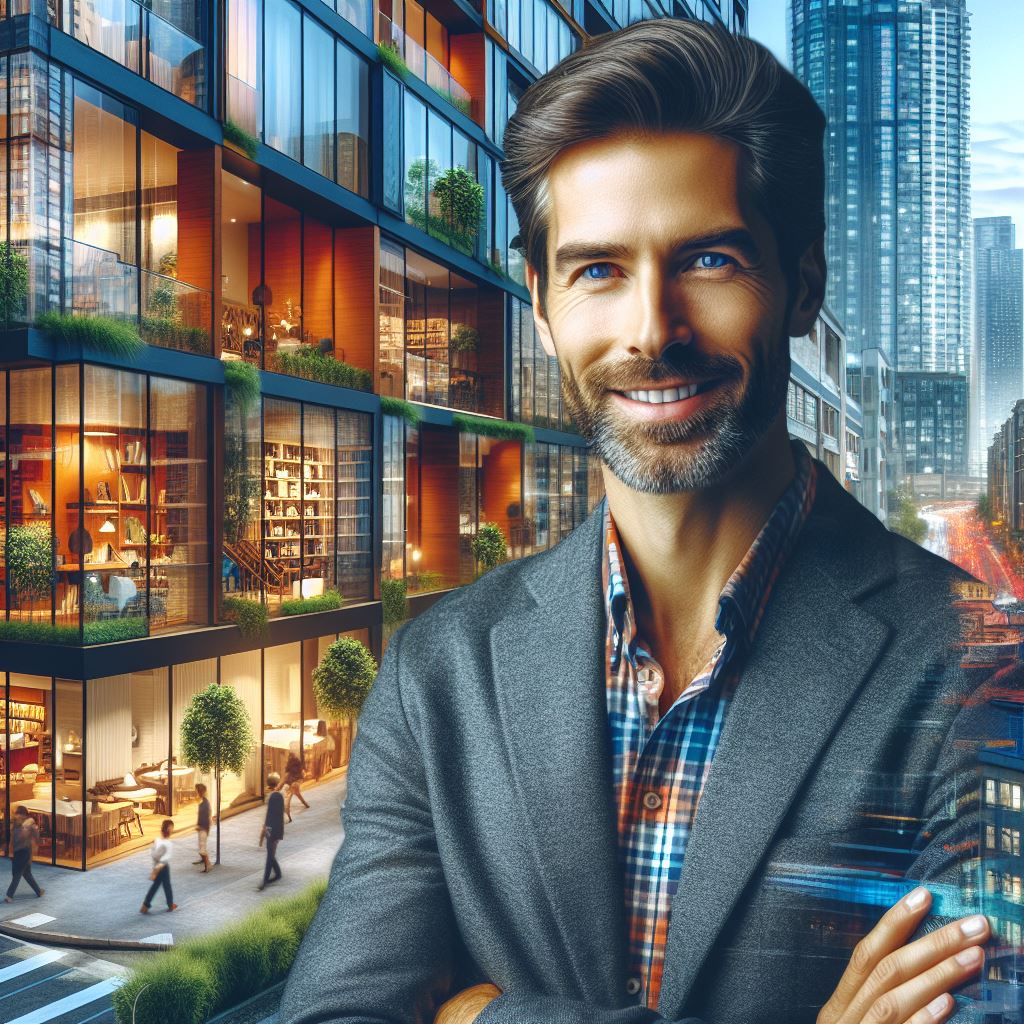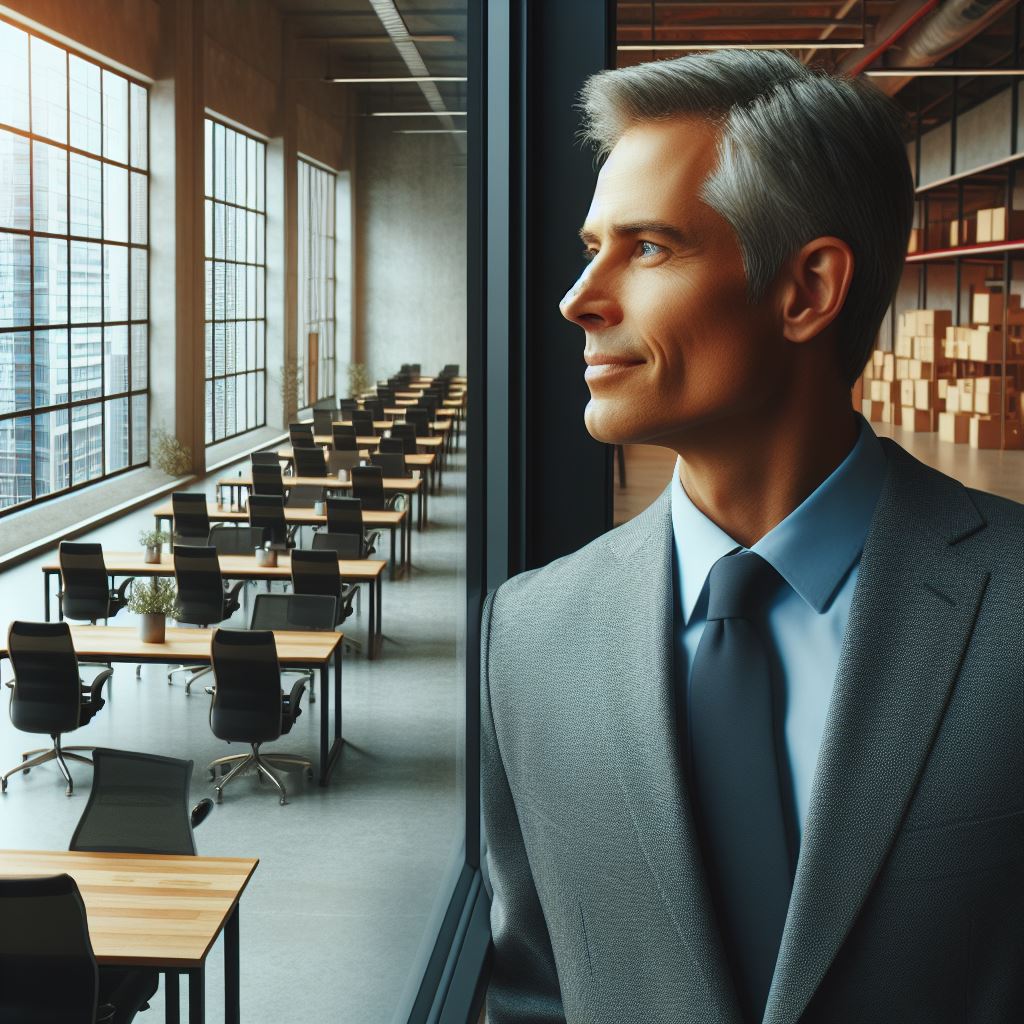Introduction
Mixed-use properties have become increasingly popular in recent years due to their unique combination of residential, commercial, and industrial spaces within a single development.
This blending of different functionalities offers various benefits, including increased convenience, reduced commuting, and a vibrant community atmosphere.
In order to make informed decisions and seize potential opportunities, it is crucial to understand the current trends in the real estate market.
The dynamic nature of this sector demands constant evaluation and assessment of emerging trends, especially in the mixed-use segment.
Looking ahead to 2024, several significant trends are expected to shape the US mixed-use property market.
One such trend is the growing emphasis on sustainability and eco-friendly design.
Developers are increasingly incorporating green technologies, energy-efficient systems, and green spaces to meet the demands of environmentally conscious consumers.
Another anticipated trend is the rise of innovative retail concepts within mixed-use developments.
Traditional retail spaces are being transformed into experiential destinations, combining shopping, entertainment, and dining to create a unique customer experience.
Furthermore, the integration of technology within mixed-use properties is set to revolutionize the way people live and work.
Smart home systems, advanced security features, and high-speed internet connectivity are becoming standard offerings in these developments.
In essence, understanding the trends in the US mixed-use property market is essential for developers and investors to capitalize on opportunities and build successful projects.
The anticipated trends for 2024 include a focus on sustainability, the evolution of retail concepts, and the integration of technology. Stay tuned for further insight into these exciting developments.
Expansion of Mixed-Use Properties
The year 2024 is expected to witness a significant expansion of mixed-use properties in the United States.
This growing trend is driven by various factors, including the increase in demand for mixed-use properties and the rise in the number and scale of mixed-use developments.
Increase in demand for mixed-use properties
Benefits of having commercial and residential spaces in close proximity
One of the primary reasons for the surge in demand for mixed-use properties is the numerous benefits associated with having commercial and residential spaces in close proximity.
This arrangement allows for greater convenience, as individuals can live, work, and play within a compact area.
It eliminates the need for long commutes, saving time and reducing transportation costs.
Additionally, residents have easy access to a wide range of amenities, such as shopping centers, restaurants, and entertainment venues.
Growing preference for live-work-play environments
Another contributing factor to the increase in demand for mixed-use properties is the growing preference for live-work-play environments.
Many individuals now seek a lifestyle that integrates their personal and professional lives seamlessly.
Mixed-use developments offer the perfect solution, providing a vibrant community where residents can live, work, and enjoy recreational activities all in one place.
This trend is particularly popular among millennials and young professionals who value convenience, community, and work-life balance.
Rise in the number and scale of mixed-use developments
Urban areas experiencing a surge in mixed-use projects
Major urban areas across the country are witnessing a surge in the number of mixed-use projects.
Developers are capitalizing on the demand for vibrant, multi-functional neighborhoods by constructing mixed-use buildings and complexes.
These developments often combine residential units, office spaces, retail establishments, and recreational facilities in a single cohesive design.
The integration of different property types creates a dynamic and lively environment that appeals to residents, workers, and visitors alike.
Examples of successful mixed-use developments across the country
There are several notable examples of successful mixed-use developments across the United States.
One such example is Hudson Yards in New York City, which is considered the largest private real estate development in the country’s history.
This project encompasses residential, commercial, and retail spaces, as well as public parks and cultural venues.
Another prominent mixed-use development is The Domain in Austin, Texas, which offers a diverse range of housing options, retail stores, office spaces, and entertainment venues.
In fact, the expansion of mixed-use properties is a prominent trend expected in the United States by 2024.
The increase in demand can be attributed to the benefits of having commercial and residential spaces in close proximity and the growing preference for live-work-play environments.
Moreover, urban areas are witnessing a rise in the number and scale of mixed-use developments, with successful examples seen throughout the country.
This trend reflects the evolving needs and desires of individuals seeking integrated, dynamic, and convenient living and working environments.
Read: Urban vs Suburban: US Real Estate Shifts
Focus on Sustainability
In recent years, there has been a growing emphasis on sustainability in the development of mixed-use properties in the United States.
As the world grapples with the challenges posed by climate change, the real estate industry has recognized the need to adopt environmentally friendly practices.
This shift towards sustainability has influenced various aspects of mixed-use property development, including green building practices and the incorporation of sustainable design elements.
Emphasis on green building practices
One key aspect of sustainability in mixed-use properties is the emphasis on green building practices.
Developers are now integrating energy-efficient technologies into their projects to reduce energy consumption and minimize carbon emissions.
This includes the use of advanced insulation materials, high-performance windows, and smart building systems that optimize energy usage.
By implementing these technologies, mixed-use properties can significantly lower their environmental impact while also reducing operating costs.
Another important component of sustainability in mixed-use properties is the use of renewable energy sources.
Developers are increasingly incorporating solar panels, wind turbines, and geothermal systems into their projects to generate clean and renewable energy on-site.
These renewable energy sources not only help reduce reliance on traditional fossil fuels but also contribute to a property’s energy self-sufficiency.
By harnessing renewable energy, mixed-use properties can contribute to the overall goal of transitioning to a low-carbon economy.
Incorporation of sustainable design elements
In addition to green building practices, sustainable design elements are also being incorporated into mixed-use properties.
One such element is the implementation of green roofs and facades.
Green roofs, covered with vegetation, offer environmental benefits such as improved air quality and reduced stormwater runoff.
Similarly, green facades, which are vertical gardens, can help improve air quality, reduce urban heat island effect, and enhance the aesthetic appeal of a property.
These sustainable design elements not only contribute to the overall sustainability of a mixed-use property but also create a more pleasant and attractive environment for occupants and visitors.
Water conservation measures are another crucial aspect of sustainable design in mixed-use properties.
With the increasing global water scarcity, developers are implementing various strategies to minimize water usage in their projects.
This includes the installation of low-flow fixtures, rainwater harvesting systems, and efficient irrigation systems.
By reducing water consumption, mixed-use properties can contribute to water conservation efforts and minimize their impact on local water resources.
In fact, the focus on sustainability in US mixed-use properties is evident through the emphasis on green building practices and the incorporation of sustainable design elements.
The integration of energy-efficient technologies and the use of renewable energy sources help reduce carbon emissions and promote energy self-sufficiency.
Additionally, the incorporation of green roofs, facades, and water conservation measures contribute to the overall sustainability and environmental friendliness of mixed-use properties.
The industry is expected to adopt more sustainable practices as demand for eco-friendly developments rises.
Read: US Commercial Property: 2024 Tax Outlook

Technology Integration
In the evolving landscape of mixed-use properties in the US, technology integration plays a crucial role.
Developers and property owners are adopting smart building technologies to enhance efficiency, sustainability, and resident experiences.
Adoption of smart building technologies
One key aspect of technology integration in mixed-use properties is the use of Internet of Things (IoT) devices for efficient monitoring and control.
These devices provide real-time data on various aspects of a building, such as occupancy, energy consumption, and air quality.
With this information, property owners can optimize energy usage and enhance operational efficiency.
Mixed-use properties integrate automated systems for improved energy management and efficiency.
These systems automate processes such as lighting, HVAC, and security, ensuring optimal resource utilization and reducing operational costs.
By implementing smart technologies, mixed-use properties can significantly improve their sustainability and reduce their environmental footprint.
Enhanced connectivity and digital infrastructure
Another significant trend in technology integration is the enhanced connectivity and digital infrastructure within mixed-use properties.
High-speed internet and seamless connectivity are becoming essential amenities for both residents and businesses.
In today’s highly connected world, reliable internet connectivity is crucial for work, communication, and entertainment.
To cater to this need, mixed-use properties are providing high-speed internet access to residents and businesses.
This infrastructure enables individuals and companies to work remotely, stream content, and access various online services without any interruptions.
By offering robust connectivity, mixed-use properties are attracting tech-savvy residents and businesses seeking convenient and modern living spaces.
Moreover, the integration of digital platforms is transforming the resident experience within mixed-use properties.
These platforms provide a centralized hub for residents to access various services and amenities, such as online booking systems, community forums, and concierge services.
By digitizing these processes, mixed-use properties can enhance convenience and streamline communication between residents and property management.
In short, technology integration in US mixed-use properties is driving significant advancements in efficiency, sustainability, and resident experiences.
The adoption of smart building technologies, including IoT devices and automated systems, enables property owners to optimize energy usage and enhance operational efficiency.
The enhanced connectivity and digital infrastructure, such as high-speed internet and digital platforms, provide convenience and empower residents to fully utilize the amenities and services offered within mixed-use properties.
As the world continues to embrace technological advancements, it is essential for property developers and owners to stay ahead of the curve and leverage technology to create innovative and desirable mixed-use properties.
Read: Investing in US Retail Real Estate in 2024
Flexibility and Adaptability
In the ever-changing landscape of mixed-use properties in the United States, one trend that is becoming increasingly prominent is the emphasis on flexibility and adaptability.
Property developers and investors are recognizing the need for spaces that can easily evolve and meet the changing needs and preferences of tenants and residents.
Demand for adaptable spaces
One of the key aspects of this trend is a focus on flexible floor plans and versatile spaces.
Property owners are favoring flexible designs over rigid layouts, easily modified to suit various requirements.
This allows for greater customization and personalization, making the space more appealing to potential tenants.
Additionally, the ability to accommodate evolving needs and preferences is becoming a crucial factor in mixed-use property development.
With societal and technological advancements constantly reshaping the way we live and work, spaces need to be adaptable enough to accommodate these changes.
Whether it’s the integration of smart home technology or the inclusion of multipurpose rooms, properties that can easily adapt to new trends will have a competitive edge.
Integration of co-working and co-living spaces
Another significant aspect of the trend towards flexibility and adaptability is the integration of co-working and co-living spaces.
Shared workspaces have gained immense popularity in recent years, with freelancers, entrepreneurs, and even established organizations opting for more dynamic and collaborative environments.
Mixed-use properties are now incorporating dedicated co-working areas, providing tenants with the convenience of working from home while still having access to professional amenities.
Alongside co-working spaces, communal living arrangements are also on the rise.
The concept of co-living has gained traction as people seek out affordable and socially engaging housing options.
Mixed-use properties are responding to this trend by including shared living spaces, such as communal kitchens, lounges, and outdoor gathering areas.
These amenities foster a sense of community and encourage social interactions among residents.
In general, the focus on flexibility and adaptability in US mixed-use properties is a response to changing societal and technological dynamics.
Property developers understand the importance of providing adaptable spaces that can easily meet evolving needs and preferences.
The integration of co-working and co-living spaces further adds to the versatility of these properties, creating dynamic environments that foster collaboration and community.
As the demand for adaptable and inclusive spaces continues to grow, property owners will need to stay ahead of the curve to attract and retain tenants in this competitive market.
Read: E-Commerce Boom: US Warehouse Demand
Mixed-Use Properties in Suburban Areas
Mixed-use properties, once commonly associated with urban areas, are experiencing a significant shift towards suburban regions.
This change can be attributed to the changing preferences and lifestyles of individuals.
People are increasingly drawn to the charm and tranquility offered by suburban living.
Movement of mixed-use developments to suburban regions
One of the primary reasons behind the movement of mixed-use developments to suburban areas is the shifting preferences of residents.
Many individuals, especially young professionals and families are opting for suburban living instead of crowded city environments.
The appeal lies in the promise of spacious homes, access to nature, and a quieter environment.
As a result, developers have recognized this demand and are shifting their focus towards creating mixed-use projects in suburban locations.
Another significant factor contributing to the rise of mixed-use properties in suburban regions is the integration of these projects with the existing suburban landscapes.
Developers are keen on preserving the distinct characteristics and aesthetics of suburban areas while introducing new elements that add value to the community.
This integration aims to create a harmonious blend between the existing suburban fabric and modern mixed-use developments.
Challenges and opportunities in suburban mixed-use developments
However, the development of mixed-use projects in suburban areas also poses unique challenges and opportunities.
One key challenge is balancing the needs of different demographics.
Suburban regions are often home to a diverse range of residents, including families, young professionals, and retirees.
Ensuring that the mixed-use development caters to the specific needs and preferences of these different groups can be a complex task.
Developers must carefully consider factors such as schools, recreational facilities, and amenities that would appeal to all demographics.
Creating vibrant and attractive community spaces is another opportunity that suburban mixed-use developments can capitalize on.
By providing well-designed public spaces, such as parks, plazas, and community centers, developers can foster a sense of community and social engagement.
These spaces serve as gathering points for residents, promoting interaction, and enhancing the overall quality of life in suburban areas.
In review, the emergence of mixed-use properties in suburban regions represents a significant shift in the real estate landscape.
The movement towards suburban living and the integration of mixed-use projects with the existing suburban landscapes have opened up new possibilities for developers.
While challenges exist in balancing the diverse needs of residents, the creation of vibrant and attractive community spaces can contribute to the overall appeal and success of suburban mixed-use developments.
Conclusion
In 2024, the trends in US mixed-use properties have revolved around sustainability, technology integration, and experiential design.
Developers have prioritized creating eco-friendly buildings that incorporate smart technology to enhance the overall living and working experience.
Adapting to the evolving market trends is crucial for the success of mixed-use properties in the US.
By understanding the changing needs and wants of consumers, developers can stay ahead of the competition and attract a wider range of tenants and visitors.
The ability to adapt to market trends ensures continued profitability and long-term sustainability.
The future of mixed-use properties in the US looks promising.
The integration of sustainable practices and advanced technologies will continue to shape the landscape of these developments.
In addition, the emphasis on creating vibrant and immersive spaces will foster a sense of community and enhance the quality of life for residents and visitors alike.
As we move forward, it is essential for developers and industry professionals to remain flexible, innovative, and responsive to the evolving needs of the market.
By embracing change and continuously pushing boundaries, mixed-use properties will continue to thrive and play a vital role in urban development in the coming years.
Ultimately, the success of mixed-use properties lies in their ability to adapt and cater to the ever-changing preferences and lifestyles of individuals.
As we look towards the future, it is clear that these properties will continue to evolve, offering dynamic and inclusive spaces that enrich the communities they serve.




